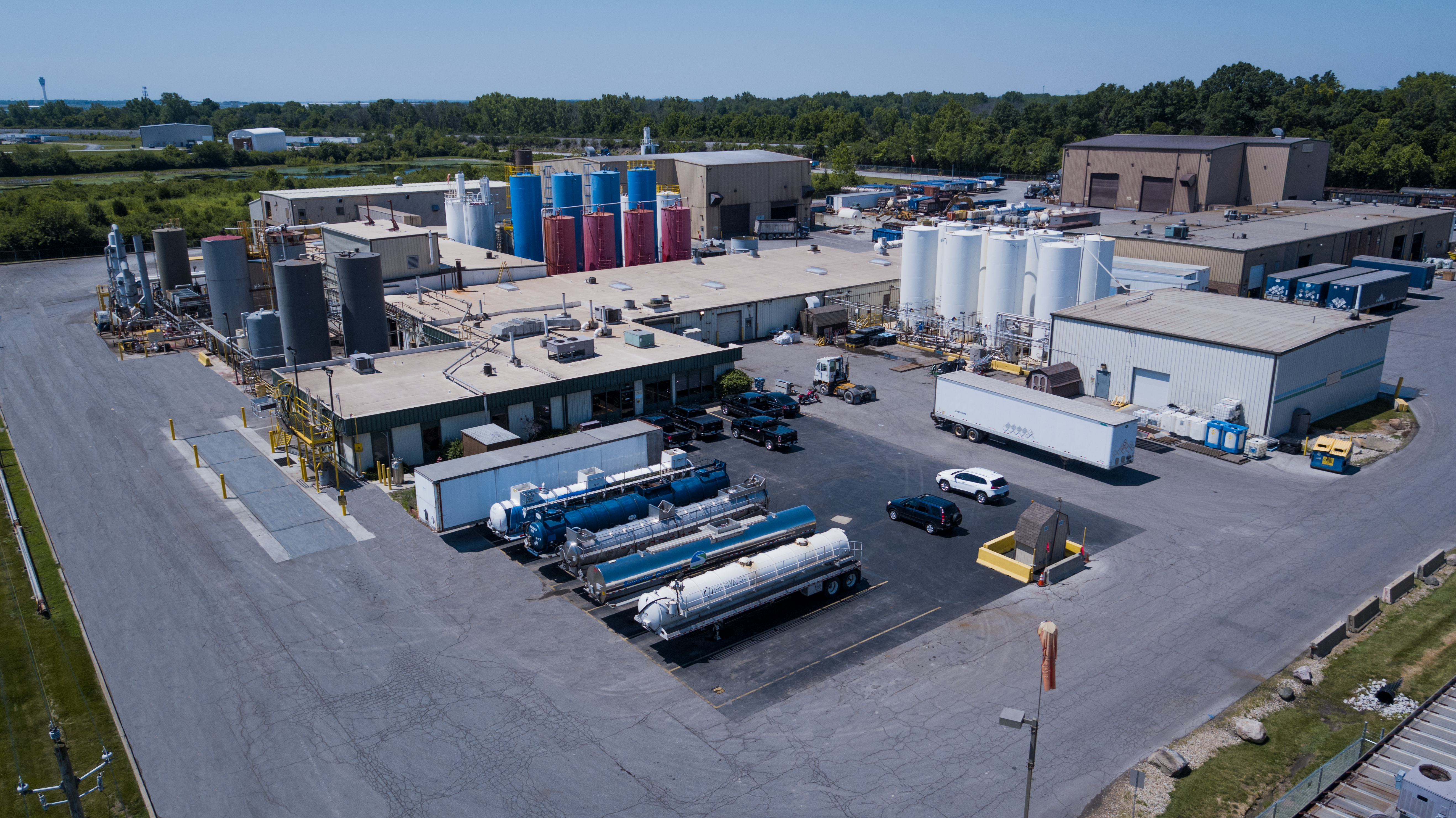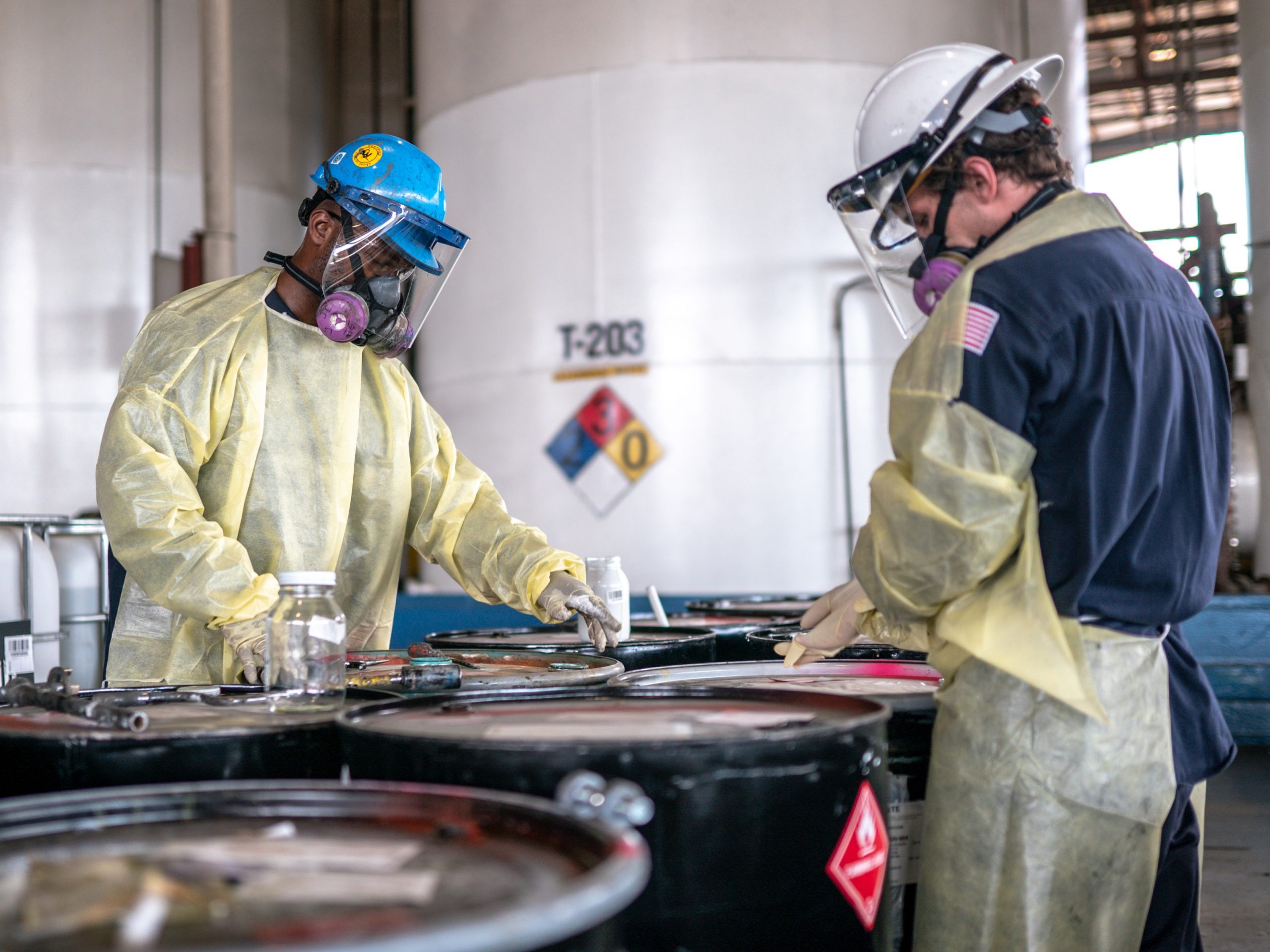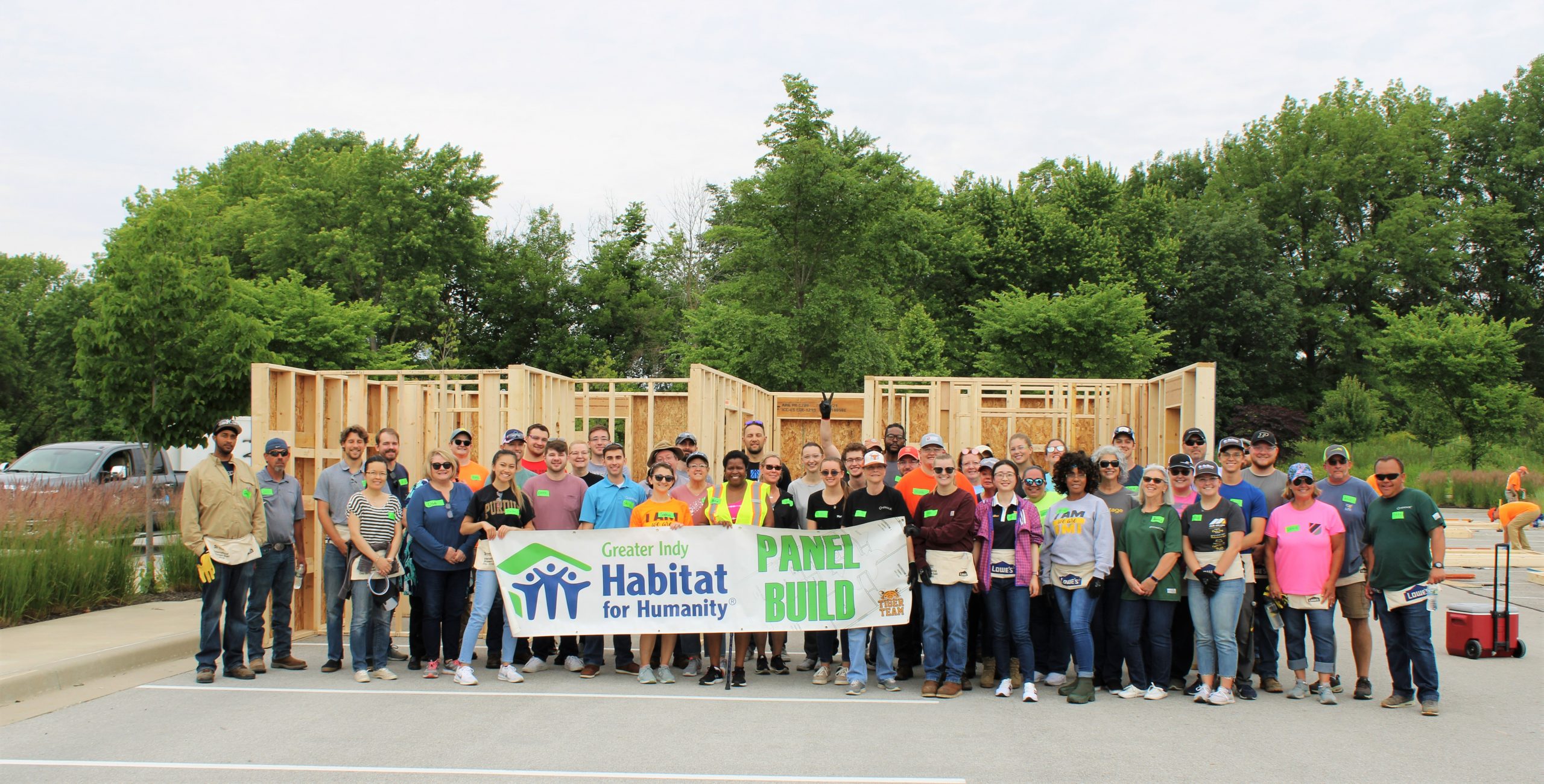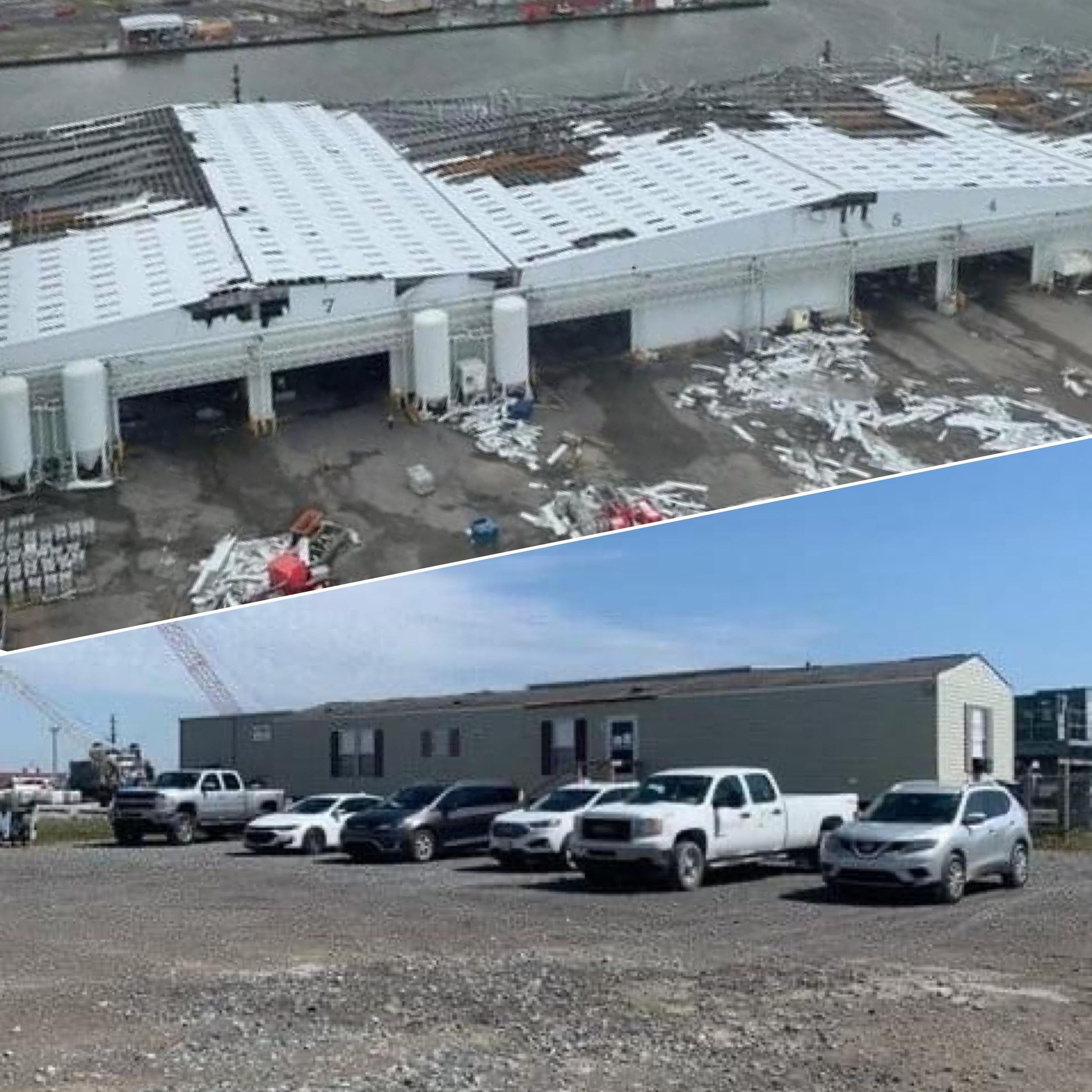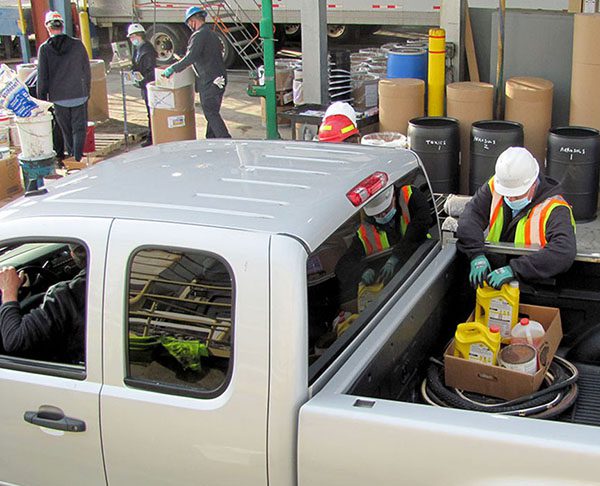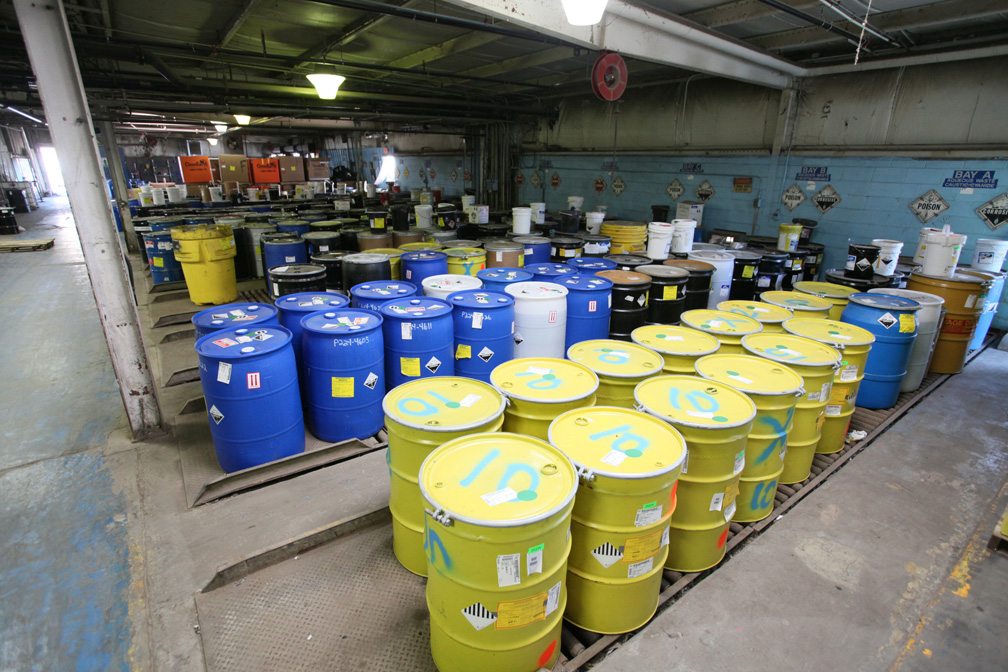
The following list of regulatory requirements for containerized hazardous wastes is taken from the supplimental information included in our RCRA training seminar booklets. While these points serve as a good summary, it is important to remember to be vigilant on keeping up to date with both national and state regulations.
1. Containers used for holding hazardous waste must be in good condition. If the container becomes damaged, deteriorated or begins to leak, the wastes should be transferred to a container that is in good condition.
2. Containers used for holding hazardous waste must not be deteriorated by the waste. The container or liner must be compatible with the wastes to be stored.
3. Each container must be labeled or marked clearly with the words “Hazardous Waste”.
4. The accumulation start date for each container is to be marked clearly on each container. The accumulation start date marking must be visible for inspection.
5. Containers holding hazardous wastes must always be closed during storage. The only time containers can be opened is to add or remove waste.
6. Containers holding hazardous wastes are to be managed to avoid rupturing or damaging the container, or otherwise causing the container to leak.
7. Areas where ignitable or reactive wastes are stored should be located at least 50 feet from the facility property line.
8. Ignitable or reactive wastes are to be separated and protected from sources of ignition or reaction (e.g., open flames, smoking, cutting, welding, hot surfaces, frictional heat, sparks, and radiant heat).
9. “No Smoking” signs are to be posted wherever there is a hazard from ignitable or reactive wastes.
10. Incompatible wastes, or incompatible wastes and materials must not be placed in the same container for storage purposes. Further, hazardous waste cannot be placed in an unwashed container that previously held an incompatible waste or material.
11. Incompatible hazardous wastes and hazardous wastes incompatible with nearby materials must be separated or protected from each other by means of a dike, berm, wall, or separated by sufficient distance.
12. Emergency equipment is required to be available at each accumulation area. We recomend the following:
- a.) Internal communications or alarm
- b.) Telephone or two-way radio
- c.) Portable fire extinguishers
- d.) Fire control equipment
- e.) Spill control equipment
- f.) Decontamination equipment
- g.) Water at adequate volume and pressure
For a list of the federally required equipment check 40CFR §265.32.
13. Adequate aisle space in the container storage area is to be maintained to allow unobstructed movement in response to an emergency, as well as to perform weekly inspections.
14. Weekly inspections must be made of container storage areas, looking for leaks or other evidence of actual or pending releases.
15. Containerized wastes are to be shipped to off-site (commercial) Hazardous Waste Management (HWM) facilities within 90 days of the accumulation start date. Small Quantity Generators (100-1000 kg/mo category) are allowed 180 day accumulation period. The SQG accumulation period is extended to 270 days when the wastes are shipped to HWM facilities that are over 200 miles from the SQG.
More News From Heritage
-
Published Articles 8/2/22
How Safety, Maintenance, and Reliability Are Intertwined
VP of Health and Safety Jim Mangas discusses the importance of plant safety, maintenance, and reliability (featured in BIC Magazine July/Aug '22)
-
Blogs 7/28/22
Spotlighting Our Environmental Interns
Highlighting some of the wonderful interns we have at Heritage this year!
-
Blogs 7/11/22
Turning Hazardous Waste into an Alternative Fuel
In this blog we walk you through the process of fuel blending, where we can turn hazardous waste materials into a viable alternative fuel source.
-
Community News 6/15/22
2022 Habitat for Humanity Build
Our 12th annual Habitat for Humanity Build
-
Blogs 4/13/22
After Hurricane Ida, Our Port Fourchon Office Rebuilds
On August 28th, 2021, the Louisiana coast was battered by Hurricane Ida. This included our Port Fourchon Service Center, where the devastating hurrica
-
Community News 4/7/22
Heritage readies for Earth Day HHW collection in East Liverpool
Heritage Thermal Services is pleased to announce that its collection of household hazardous wastes for the East Liverpool area returns for 2022.
-
Published Articles 4/2/22
The Impact of Changing Conditions
VP of Health and Safety Jim Mangas discusses preparedness for unexpected conditions during a project. (featured in BIC Magazine March/April '22)
-
Blogs 3/11/22
International Women’s Week Spotlight – Rachel McGrogan
Rachel McGrogan speaks about her time as a Lab Chemist at Heritage.
